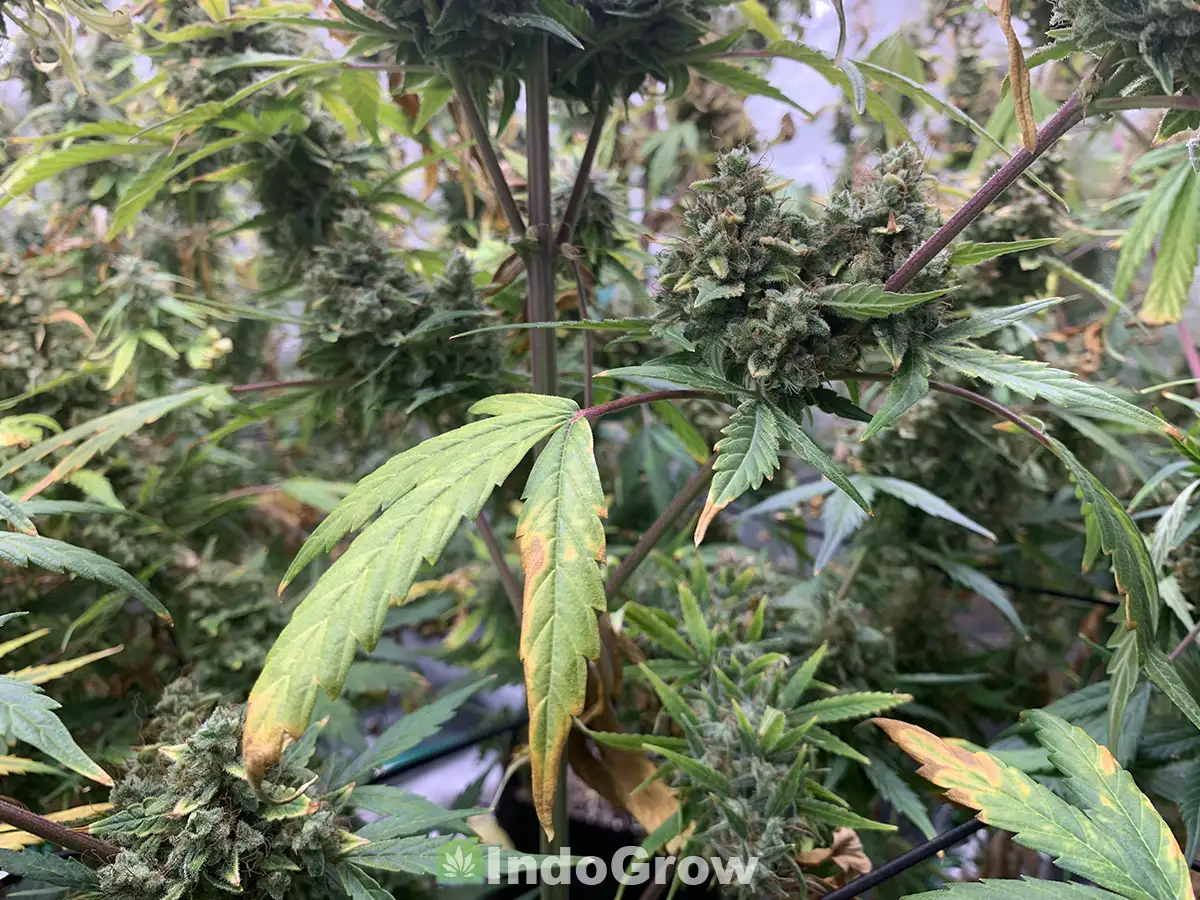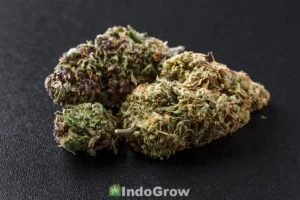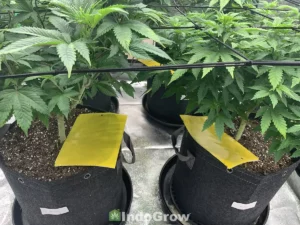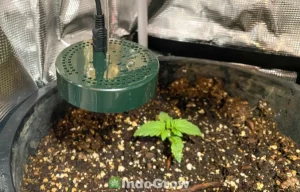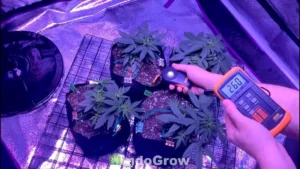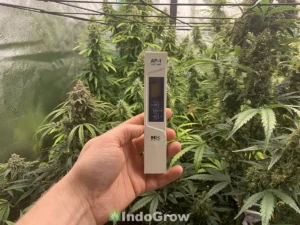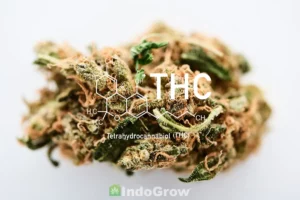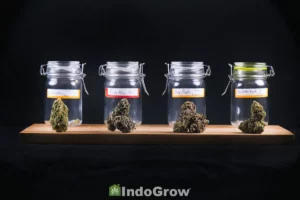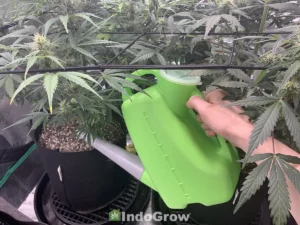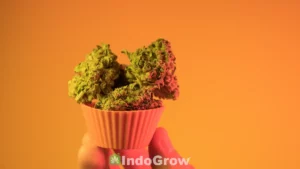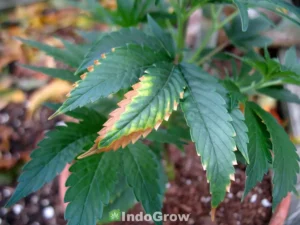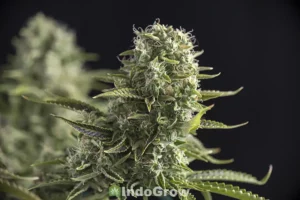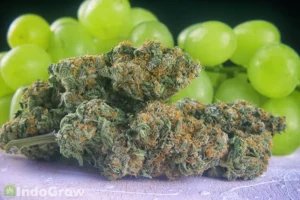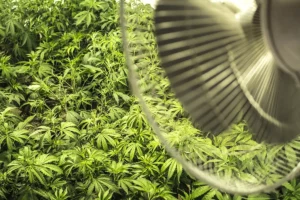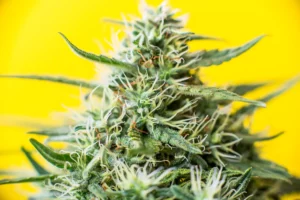Nutrient deficiency in weed plants can seriously hurt your harvest. Cannabis plants require a wide variety of macro and micro nutrients to grow and thrive, but preventing nutrient deficiency can often be more complicated than just feeding the plant more nutrients.
In this article, we will explore some of the most common nutrient deficiencies in cannabis plants and discuss how to identify and address them. Understanding the nutrient needs of cannabis can help growers produce larger, healthier plants with a more abundant harvest.
Table of Contents
- Macronutrients vs Micronutrients
- Mobile Nutrients vs Immobile Nutrients
- Synthetic Nutrients vs Organic Nutrients
- Cannabis pH and Nutrient Lockout
- PPM and EC for Weed
- Nitrogen Deficiency in Weed
- Phosphorus Deficiency in Weed
- Potassium Deficiency in Weed
- Calcium Deficiency in Weed
- Magnesium Deficiency in Weed
- Sulphur Deficiency in Weed
- Iron Deficiency in Weed
- Conclusion
Macronutrients vs Micronutrients
Macronutrients refer to the nutrients that cannabis consumes in relatively large quantities. The three “primary” macronutrients that weed plants need in the highest concentrations are nitrogen, Phosphorus, and Potassium. These three macronutrients are often abbreviated as NPK and are the foundation of any basic nutrient blend for weed.
Secondary macronutrients that weed plants consume in more moderate doses include calcium, magnesium, and sulfur. Some growers also consider silica to be a secondary macronutrient, although other growers do not supplement silica.
Micronutrients are nutrients that weed plants require in much smaller doses than macronutrients. Examples of micronutrients include copper, iron, manganese, nickel, molybdenum, Boron, Chlorine, and Zinc. These trace nutrients are usually already present in healthy soil, but some growers choose to supplement micronutrients, especially if they are growing in a non soil setup.
Mobile Nutrients vs Immobile Nutrients
Mobile nutrients are nutrients that can be moved from one part of the plant to another depending on need, while immobile nutrients are locked in place in the part of the plant where they were first used. When it comes to nutrient deficiency in weed, deficiencies in mobile nutrients often first appear at the bottom of the plant on older leaves, while deficiencies in immobile nutrients often appear at the top of the plant on younger leaves.
Examples of mobile macronutrients include nitrogen, phosphorus, potassium, and magnesium. A handful of micronutrients like nickel and molybdenum are also mobile.
Examples of immobile macronutrients include calcium and sulfur. Many more micronutrients are immoble, including iron, manganese, zinc, copper, and boron.
Synthetic Nutrients vs Organic Nutrients
Synthetic nutrients are manufactured from materials such as minerals, gasses, and inorganic waste products, while organic nutrients are created from natural sources such as organic waste and microbial activity.
Synthetic nutrients are fast acting and quickly absorb into the plant or build up as mineral salts in the soil. This can cause more rapid onset of nutrient deficiencies and toxicities compared to organic nutrients. On the other hand, the fast acting nature of synthetic nutrients makes course correction and dosage adjustments simpler.
Organic nutrients are slower acting and must be broken down in the soil by beneficial microbes before the weed plant can absorb them. These nutrients cultivate a healthier soil microbiome and can sustain a plant much longer per feeding, which often leads to fewer issues with nutrient deficiencies. However, they can be more expensive and confusing to apply compared to synthetic nutrients.
Synthetic nutrients should not be added to an organic system, as they can kill beneficial bacteria and negatively alter soil chemistry. It is better to select if you will be using organic or synthetic before you begin growing cannabis.
Cannabis pH and Nutrient Lockout
Nutrient lockout occurs when a cannabis plant is unable to take up a nutrient even when it is present in the soil. This is usually caused by one of two things: improper pH or imbalanced nutrient ratios.
Ph that is too high or too low can make nutrients unavailable for your plant to absorb. For this reason, water should always be pH adjusted before giving it to your weed plants. Add any nutrients to the water before pH testing, then use pH up or down to get it into the ideal range of 6-7.
Next, test the pH of your runoff water. Runoff pH should be between 5.8 – 6.2 for plants grown in soil, and a bit lower for those grown hydroponically. If your pH is out of range, flush the soil with pH adjusted water then water again with your regular nutrient blend and properly pH’d water.
The other major cause of nutrient lockout is feeding your plants nutrients in the wrong ratio. Excessive amounts of certain nutrients can inhibit the plant from absorbing other nutrients. If you are unsure, check the manufacturer’s instructions for your nutrients to ensure your NPK and Cal-Mag nutrients are properly balanced.
PPM and EC for Weed
PPM (parts per million) and EC (electrical conductivity) are two measurements used to determine if you are providing enough nutrients to your cannabis plants. First, use a TDS or other meter to measure the ppm/ec of both your nutrient solution and runoff water. In a healthy system, the runoff water will have a slightly lower value than the initial solution.
If your runoff PPM/EC is more than 10% lower than your nutrient solution, you will need to increase nutrients, as this indicates your plants are taking up a large portion of the nutrients you are feeding.
If the runoff value is the same or higher than your starting value, this indicates that your plants are not absorbing nutrients properly and your soil likely has unhealthy amounts of mineral salt buildup. Flush the soil and decrease nutrient levels for future feedings.
Nitrogen Deficiency in Weed
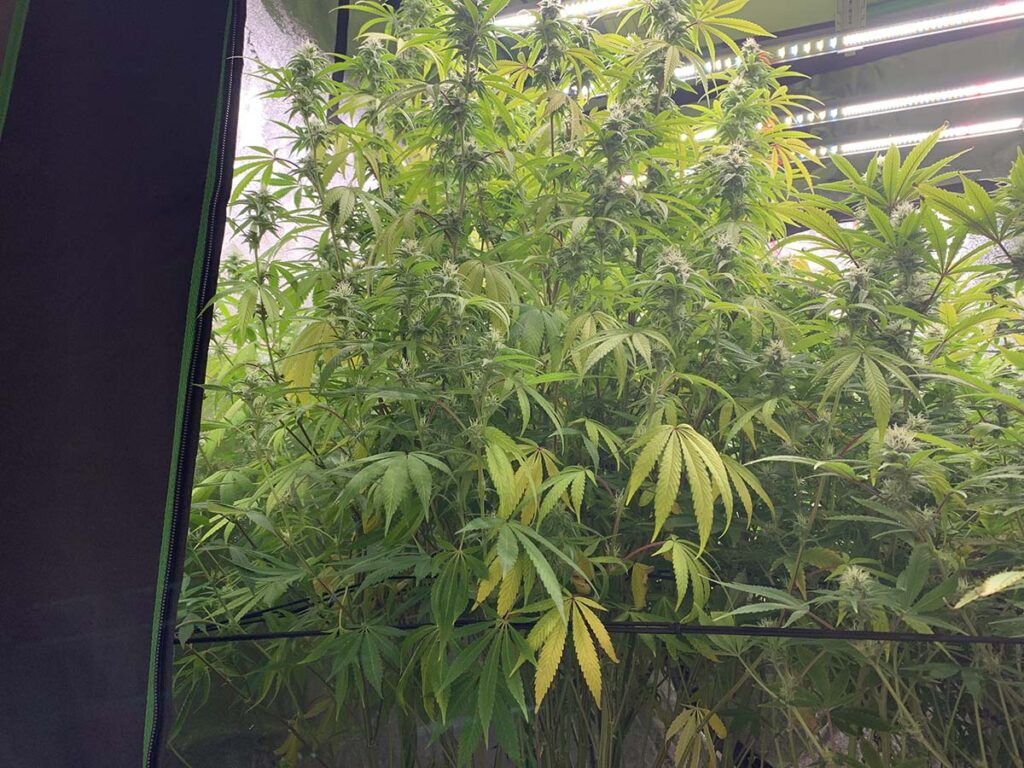
Symptoms
Symptoms of nitrogen deficiency in weed include stunted growth, yellowing of the lower leaves, and premature flowering. Symptoms will first appear on the oldest leaves and move upward as the deficiency becomes more severe.
How to Fix
Nitrogen deficiency may be caused by improper pH, imbalanced nutrition, or underfeeding – especially during the vegetative stage. Start by checking the pH of your runoff water as well as the NPK ratio of your fertilizer.
If your pH is too high, flush the soil with pH adjusted water then resume watering with properly pH adjusted water in the future. If your NPK ratio is off for your plant’s current growth stage, flush the soil then feed with a life stage appropriate NPK fertilizer.
If your pH and NPK ratios both seem fine, you may be underfeeding your plant. Start by increasing the frequency of feedings, such as by going from a water-feed-water schedule to a feed-feed-water schedule. This tends to be gentler on the plant than upping the nutrient concentration.
Phosphorus Deficiency in Weed
Symptoms
Phosphorus deficiency in cannabis causes the lower leaves to turn a dark bluish green, curl up, and eventually develop brown or yellow spots. Leaves will eventually wither and fall off. Vertical growth will slow and flowers will become small and stunted.
How to Fix
Phosphorus deficiency may be caused by improper pH, nutrient imbalance, cold temperatures, or underfeeding – especially during the flowering stage.
Start by checking the pH of your runoff water. If the runoff pH is not between 5.8-6.2, flush the soil with pH adjusted water and continue using pH adjusted water in the future to maintain proper soil pH. Check the ratio of NPK nutrients you are feeding as well; phosphorus levels should increase between the vegetative and flowering stages.
Phosphorus uptake can also be blocked by excess nickel and iron in the soil, so flushing the soil and cutting back on micronutrient supplementation may help if you suspect this to be the culprit.
Cold temperatures can also significantly slow the uptake of phosphorus into your plant. If your plant is getting too cold, consider adding a space heater or sealing any drafty areas near the grow space.
Finally, underfeeding phosphorus can cause deficiency, particularly in the flowering stage. Start by increasing the frequency of feedings, such as by going from a water-feed-water schedule to a feed-feed-water schedule. This tends to be gentler on the plant than upping the nutrient concentration.
Potassium Deficiency in Weed
Symptoms
Potassium deficiency often causes yellowing or browning around the margins of older leaves, which slowly spreads inwards towards the leaf veins. Later on, brown spots will appear on the leaves. New growth will be slow, fragile, and pale colored, and the plant will become more sensitive to light and heat.
How to Fix
Potassium deficiency in weed plants may be caused by improper soil pH, excessive heat and light, improper NPK ratios, or underfeeding – particularly during flowering.
Similar to phosphorus, you should begin by checking the pH of your runoff water. If the runoff pH is not between 5.8-6.2, flush the soil with pH adjusted water and continue using pH adjusted water in the future to maintain proper soil pH. Check the ratio of NPK nutrients you are feeding as well; potassium levels should start low and steadily increase during the early to late flowering stages.
Because potassium is involved in temperature regulation in the cannabis plant, using lights that are too strong or too close can put a strain on the plant’s potassium reserves. If you see deficiency symptoms alongside burning on the upper leaves, consider moving your lights further from the plant.
Finally, potassium deficiency can be caused by underfeeding during flowering. If you suspect this to be the case, increase the frequency of your usual fertilizer, or consider adding a bloom boosting supplement such as Foxfarms Beastie Bloomz.
Calcium Deficiency in Weed
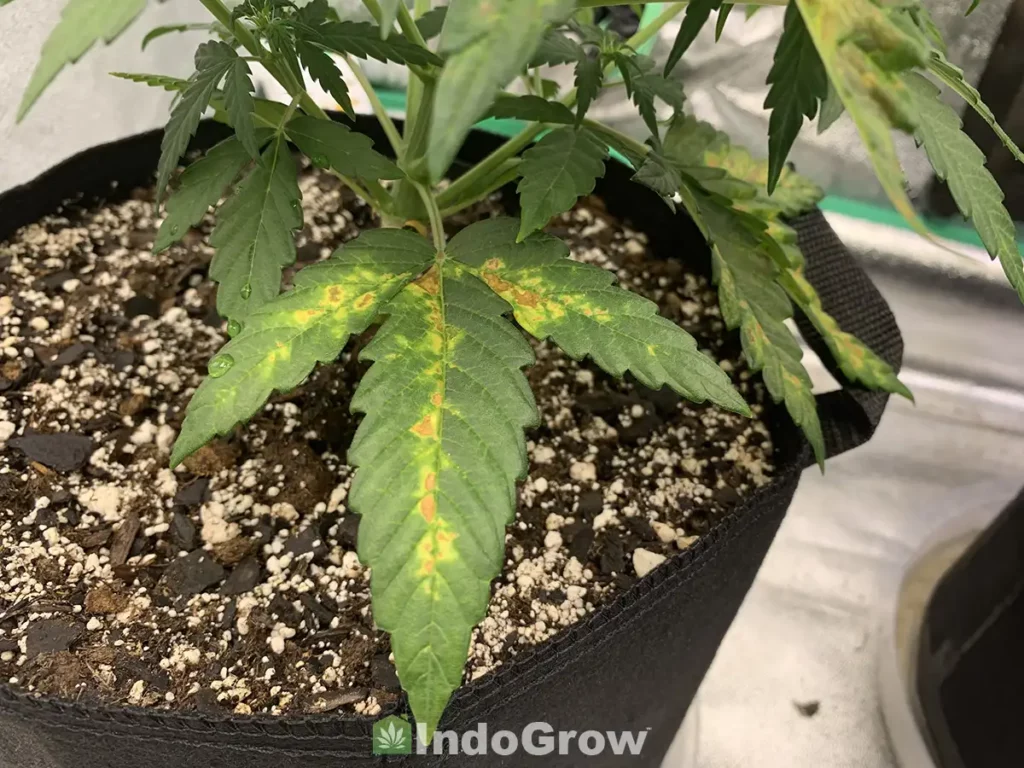
Symptoms
Calcium deficiency in weed can cause slowed growth as well as curling and yellowing of the leaf margins and veins on the lower leaves. Leaves will develop yellow or brown spots and roots will weaken as the deficiency progresses.
How to Fix
Calcium deficiency in cannabis may be caused by imbalanced pH, incorrect climate, or underfeeding calcium.
Like other nutrient deficiencies, start by testing the pH of your runoff water. If the pH of the water is not in the ideal range of 5.8-6.2, flush with pH adjusted water and continue to use pH’d water for future feedings.
Environmental conditions can also affect calcium uptake. Plants cannot make full use of available calcium if their grow room is too cold or too humid. Check temperature and humidity or the vapor pressure deficit (VPD) charts for your growth stage to ensure these parameters are in healthy range.
Finally, consider using a calcium and magnesium (CalMag) supplement such as Calimagic from general hydroponics. It is important to supplement calcium and magnesium at the same time, as an imbalanced ratio of these two nutrients can cause one or the other to not be absorbed.
Magnesium Deficiency in Weed
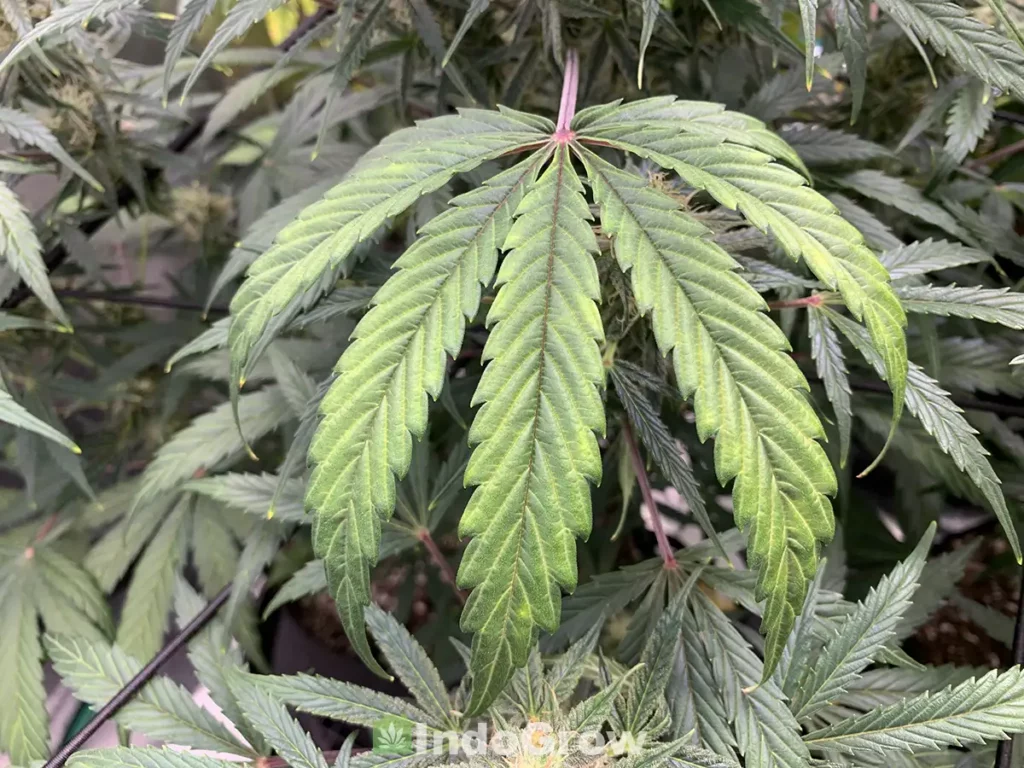
Symptoms
Magnesium deficiency in cannabis causes yellowing of the lower leaf margins, which slowly spreads inward until the leaf browns and falls off. New growth will slow and may have a purplish brown hue.
How to Fix
Magnesium deficiency in weed plants may be caused by low pH, nutrient lockout, or underfeeding magnesium.
Like other nutrients, magnesium can only be absorbed by cannabis at certain pH levels. pH in soil rarely gets low enough to lock out magnesium, but low pH is the most common cause of magnesium deficiency in hydroponics systems. If your runoff pH is lower than 5.8, you will need to flush your system and raise the pH to combat this problem.
Magnesium absorption can also be blocked by overfeeding other nutrients, especially calcium and potassium. Ensure that you are following manufacturers guidelines for your main NPK fertilizer, and consider adding a CalMag supplement like Calimagic if you believe magnesium levels are too low. Do not add only magnesium to combat a deficiency, as this can cause calcium lockout.
Sulphur Deficiency in Weed
Symptoms
With sulfur deficiency, new growth will be pale green and more sensitive to light and heat. Yellowing will begin at the base of the youngest leaves and progress outwards, often being more visible on the underside of the leaf. Flowering will also slow or stop entirely if the deficiency becomes severe.
How to Fix
The main causes of sulfur deficiency in weed plants are high pH, overwatering, and overfeeding of other nutrients.
Sulfur can only be absorbed by cannabis in a certain band of pH levels, and pH values over 6.5 will cause nutrient lockout of sulfur. Test the pH of your runoff water, then flush the system and use pH adjusting fluid to lower pH into the 5.8-6.2 range.
The other main cause of sulfur deficiency is built up mineral salts in soil causing nutrient lockout. To solve this problem, flush the soil and resume feeding nutrients at a lower dosage or at longer intervals.
Finally, overwatering can cause sulfur naturally present in the soil to be washed out. You can combat this problem by using a nutrient blend containing sulfur.
Iron Deficiency in Weed
Symptoms
Iron deficiency in weed is slow moving and occurs in three distinct stages. In stage one, young leaves will become light green or yellow near the stem. In stage two, yellowing will spread throughout the leaf and leaf veins will become darker in color. Finally, in stage three, the entire leaf will be yellow with black veins, and leaves will begin to wilt and fall off the plant.
How to Fix
Cannabis iron deficiencies can be caused by high pH, poor overall plant care, or lack of iron in the substrate.
PH values over 7.0 will cause nutrient lockout of iron. As with other nutrients, test the runoff water, then flush the medium and adjust pH down until it reaches 6.2 or lower.
Another common cause of iron deficiency is poor plant care. Temperature swings, poor soil quality, and low lighting conditions can all slow your plant’s uptake of iron. Because iron deficiency can be caused by so many environmental factors, it may take some trial and error to determine the root cause of the deficiency. Fortunately, iron deficiency often progresses slowly and often takes many weeks to cause significant harm to a plant.
Although less common, lack of iron in the growing medium can be another cause of iron deficiency, particularly in non soil mediums. Many cal mag supplements contain a small amount of iron, which should be sufficient to resolve a deficiency caused by low iron levels.
Conclusion
Cannabis nutrient deficiencies can have significant negative impacts on your crops if left untreated. Fortunately, with careful monitoring of your plant’s health, most nutrient deficiency symptoms in weed can be reversed within days or weeks. Provided with a healthy pH, stable growing environment, and a balanced nutrient profile, your cannabis plants can thrive and produce to their full potential.

Rocky Horton
Author
Rocky Horton is an experienced cannabis grower and the founder of IndoGrow. The IndoGrow editorial team has over four decades of combined growing experience. Learn more.

